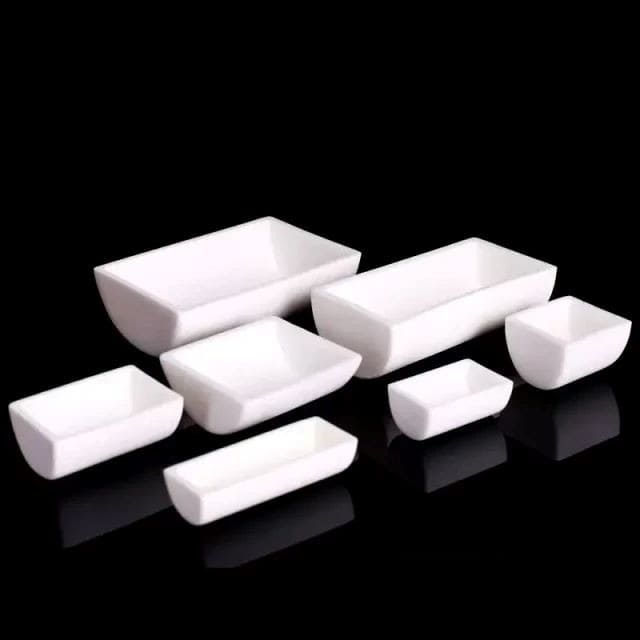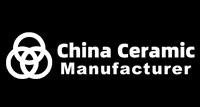The Role of Alumina Boats in High-Temperature Applications
Alumina boats, made from high-purity aluminum oxide (Al₂O₃), play a critical role in high-temperature industrial, semiconductor, and laboratory environments. Thanks to their outstanding thermal stability, chemical inertness, and structural integrity, these ceramic vessels are widely used in processes like sintering, calcination, and evaporation, where conventional materials would fail. Alumina boats can withstand continuous use at temperatures exceeding 1600 °C without deformation, cracking, or contaminating sensitive materials. Their versatility extends across industries including metallurgy, advanced ceramics, photovoltaics, and materials research. This article delves into their fundamental properties, fabrication techniques, performance benefits, key application sectors, and emerging trends that position alumina boats as indispensable tools in high-performance thermal processing.
At China Ceramic Manufacturer, we specialize in high-quality alumina ceramic products, ensuring optimal performance for industrial and scientific applications.

What Are Alumina Boats?
Alumina boats are ceramic containers designed to hold substances during thermal treatments like sintering, annealing, or evaporation. They can withstand very high temperatures without deforming or contaminating the materials they hold. Their resistance to chemical attack makes them suitable for corrosive atmospheres and reactive environments.
| Property | Typical Range or Value | Function |
| Al₂O₃ Purity | 95–99.8% | Ensures chemical resistance and thermal durability |
| Max Operating Temperature | 1600–1800 °C | Suitable for ultra-high temperature processes |
| Thermal Expansion | 7–8 × 10⁻⁶ /K | Maintains shape under rapid temperature changes |
| Common Shapes | Rectangular, round, custom | Adaptable to different furnace configurations |
Thanks to these engineered properties, alumina boats are reliable for repeated use in vacuum systems, clean rooms, and various heat treatments where purity and performance are critical.
Explore our high-quality alumina boat.
Why Are Alumina Boats Suitable for Extreme Environments?
Choosing the right container for high-temperature processing requires balancing thermal performance with chemical compatibility. Alumina boats outperform many other materials in this regard due to their excellent combination of thermal resilience and chemical inertness.
- Operate reliably above 1600 °C without structural failure
- Resist degradation from oxidizing, reducing, and corrosive atmospheres
- Provide long-term dimensional stability under thermal cycling
- Retain chemical purity, avoiding cross-contamination with contents
These features make alumina boats indispensable in applications where even the slightest contamination can compromise results.
How Do Alumina Boats Compare to Other High-Temperature Containers?
While alumina is a top choice for many applications, it’s important to compare it with other commonly used materials like quartz, graphite, zirconia, and more advanced ceramics. Each material has distinct strengths and trade-offs in thermal behavior, chemical compatibility, and cost. This helps engineers and researchers select the best container for their specific process requirements.
| Material | Max Temp (°C) | Chemical Resistance | Thermal Shock Tolerance | Cost Level |
| Alumina | 1700 | Excellent (esp. in oxidizing) | Moderate | Moderate |
| Quartz | 1100 | Moderate (avoid alkalis) | High | Low |
| Graphite | 3000 (inert only) | Poor in oxidative conditions | High | Low |
| Zirconia | 2400 | Excellent | Low | High |
| Silicon Carbide (SiC) | 1600–1900 | Good in most environments | High | Moderate–High |
| Boron Nitride (BN) | 1800 | Excellent in vacuum/inert gas | Low | High |
| Magnesium Oxide (MgO) | 2800 | Excellent (esp. basic slags) | Low | Moderate |
This broader comparison shows that alumina strikes the optimal balance between high-temperature capability, resistance to aggressive atmospheres, mechanical strength, and affordability. While materials like BN and graphite may outperform in specific environments (e.g., vacuum or inert), alumina remains the most dependable and cost-effective option for general high-temp applications.
Request a custom quote for alumina boat.
What Are the Key Applications of Alumina Boats?
Alumina boats serve a wide range of applications in materials science, electronics, metallurgy, and ceramics. Their geometry and purity enable precise thermal processing for sensitive and advanced materials.
Common Applications Include:
- Sintering of ceramic powders and components
- Evaporation of metal oxides or precursors in vacuum furnaces
- Thermal analysis or high-temperature material testing
- Annealing of thin films, wafers, and crystal substrates
Their high durability and stability make them well-suited for industries where consistency, cleanliness, and temperature endurance are required.
What Are the Main Advantages of Using Alumina Boats?
Alumina boats are widely adopted because they combine high performance with practicality. Their consistent behavior in repeated heating cycles makes them a go-to choice for both R&D and production environments.
- High chemical inertness prevents unwanted reactions
- Long operational life with minimal wear or cracking
- Customizable sizes and shapes available for specific process needs
- Compatible with vacuum, air, and controlled gas atmospheres
These strengths ensure that alumina boats provide not only safety and reliability but also long-term cost efficiency in demanding thermal applications.
How Are Alumina Boats Manufactured?
The production of alumina boats involves advanced ceramic processing techniques to ensure the desired thermal, mechanical, and chemical properties are achieved. Precision and purity are critical throughout the process.
| Process Step | Description |
| Powder Preparation | High-purity Al₂O₃ is milled and blended to fine particle size |
| Shaping | Boats are formed via slip casting, pressing, or extrusion |
| Drying | Moisture is removed gradually to prevent cracking |
| Sintering | Boats are fired at 1600–1750 °C to densify the ceramic |
| Finishing | Machining or polishing ensures dimensional and surface quality |
Each step contributes to the final product’s strength, resistance to shock, and suitability for high-purity environments.
Are There Any Limitations to Alumina Boats?
Despite their advantages, alumina boats have some limitations that engineers must consider during design and operation. Understanding these helps avoid premature failure or process inefficiency.
Limitations Include:
- Susceptibility to thermal shock if rapidly heated or cooled
- Brittle nature can lead to fracture under impact or stress
- Not suitable for use with strong hydrofluoric acid or alkali vapors
- Higher cost compared to basic materials like quartz
Mitigating these limitations involves proper handling, gradual heating cycles, and ensuring compatibility with specific chemicals.
What Are the Future Trends in Alumina Boat Development?
With the continued evolution of advanced materials and electronics manufacturing, alumina boat technologies are also improving. New methods and compositions are being explored to push performance even further.
Emerging Trends Include:
- Use of nano-grained or doped alumina for higher strength and longevity
- Additive manufacturing (3D printing) for complex and custom geometries
- Surface treatments to reduce contamination or increase lifespan
- Lightweight, thin-walled designs for rapid thermal response
As demand for high-performance, low-contamination thermal containers rises, innovations in alumina boat design will continue to drive adoption.
FAQ
| Question | Answer |
| 1. Can alumina boats be reused multiple times? | Yes, they are engineered for repeated use under high temperatures. Their lifespan depends on usage frequency, temperature exposure, and handling care. |
| 2. Are alumina boats compatible with all gases? | They perform well in air, nitrogen, argon, and most reactive gases. Avoid exposure to hydrofluoric acid vapors and molten alkalis. |
| 3. Can alumina boats be customized? | Yes, custom sizes and geometries are available from most manufacturers to match specific furnace chambers or processing needs. |
| 4. How should alumina boats be cleaned? | Use dilute acids or ultrasonic cleaning. Avoid rapid temperature shifts to prevent thermal shock during or after cleaning. |
| 5. What is the maximum temperature alumina boats can withstand? | Typically up to 1700 °C in oxidizing environments, but stability may vary based on grain size and sintering quality. |
Conclusion
Alumina boats are indispensable tools for high-temperature applications where material stability, chemical purity, and structural durability are critical. Whether in semiconductor fabrication, ceramic sintering, metallurgical analysis, or advanced materials research, these containers ensure reliable performance under extreme thermal and chemical conditions. Their resistance to corrosion, minimal contamination risk, and ability to retain shape over repeated cycles make them a trusted choice in both laboratory and industrial settings. Heeger Materials offers high-purity alumina boats in customizable shapes and sizes, delivering the precision and quality required to support your most demanding thermal processing needs with confidence and consistency.
Looking for high-quality alumina boat? Contact us today!
